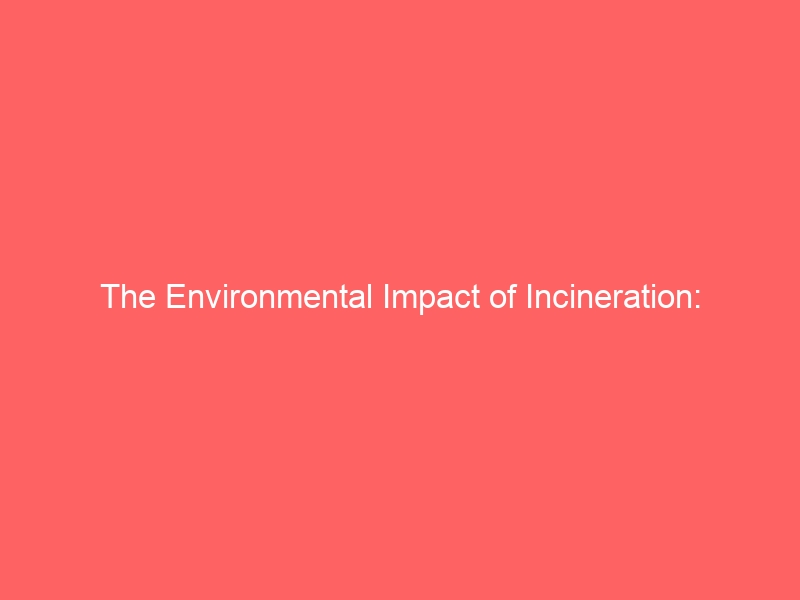The Environmental Impact of Incineration: Advantages and Disadvantages
Incineration is a waste treatment technology widely used around the world to manage and dispose of various types of waste, including municipal solid waste, hazardous waste, and medical waste. While incineration offers several advantages, such as reducing the volume of waste and producing energy, it also has significant environmental impacts and disadvantages that must be carefully considered.
Advantages of Incineration:
1. Waste Reduction: Incineration can significantly reduce the volume of waste by up to 90%, which helps to conserve valuable landfill space and minimize the need for new landfills.
2. Energy Recovery: Incineration generates energy in the form of steam or electricity by burning the waste, which can be used to power homes, businesses, and industries.
3. Air Pollution Control: Modern incinerators are equipped with advanced pollution control technologies, such as scrubbers and filters, to minimize emissions of harmful pollutants, including particulate matter, nitrogen oxides, sulfur dioxide, and volatile organic compounds.
4. Destruction of Hazardous Waste: Incineration is an effective method for destroying hazardous waste, such as industrial chemicals, pharmaceuticals, and medical waste, to prevent environmental contamination and public health risks.
Disadvantages of Incineration:
1. Air Emissions: Despite the use of pollution control devices, incineration can still release pollutants into the atmosphere, including dioxins, heavy metals, and greenhouse gases, which can contribute to air pollution and climate change.
2. Ash Residue: Incineration generates ash residue from the combustion process, which may contain toxic substances and require proper disposal in hazardous waste landfills.
3. Public Health Concerns: There are concerns about the potential health risks associated with exposure to air pollutants and toxic ash from incinerators, especially for nearby communities and workers.
4. Resource Competition: Incineration competes with recycling and other waste management strategies, as it may discourage efforts to reduce, reuse, and recycle materials and promote a throwaway culture.
Considering the potential environmental impacts and trade-offs associated with incineration, it is important to carefully evaluate the suitability of this technology for waste management and explore alternatives, such as recycling, composting, and waste-to-energy conversion. Moreover, the implementation of stricter environmental regulations and best practices can help to mitigate the negative effects of incineration on air quality, public health, and the environment.
In conclusion, while incineration offers advantages such as waste reduction and energy recovery, it also raises concerns about air pollution, toxic ash, and resource competition. Therefore, it is essential to weigh the environmental impact and trade-offs of incineration in the context of sustainable waste management and consider a holistic approach that prioritizes waste prevention and minimizes environmental harm.







